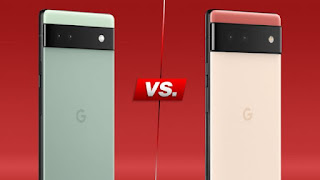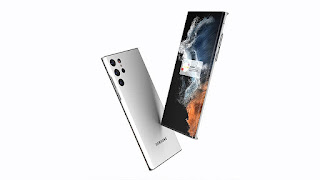The Google Pixel 6 has proven to be one of the most popular Pixel phones of all time, and fans love its design, photography experience, and clean software. But one problem is that it’s a pretty pricey phone, and that’s exactly what Google‘s Pixel 6a is going to fix — it’s a new budget alternative to the flagship model that’s less expensive and has some cuts to keep costs down .
Below we’ll check out their specs in a row, let’s take a look!

Pixel 6a and Pixel 6 design
These are very similar looking phones. The Pixel 6 series is unified by its appearance, with a horizontal camera “visor” breaking up the back of the device. The 6a protrudes less, but that’s really the theme of this phone – it’s smaller than the 6.
The Pixel 6a also has a plastic back, unlike the 6’s glass, so it’ll feel cheaper, but will likely take more of a hit. Neither phone has a 3.5mm audio jack, and both use the USB-C standard for charging and data transfer. The Pixel 6a’s advantage is that it uses a more advanced version of the Pixel 6’s in-screen fingerprint scanner, so unlocking is significantly faster and more reliable.
Pixel 6a and Pixel 6 displays
The Google Pixel 6‘s 6.4-inch display panel looks larger compared to the Pixel 6a’s 6.1-inch.
Beyond what you think of “big versus small,” the Pixel 6 has a great display. It has the same resolution, 1080 x 2400, but with a 90Hz refresh rate instead of 60Hz, and more advanced display technology, so it supports HDR10+. Both phone displays use a “punch hole” cutout for the front-facing camera at the top center of the panel.
Pixel 6a vs Pixel 6 camera comparison
The Google Pixel 6a and Pixel 6 have two cameras in common, one different.
The first similarity is the selfie camera, both boast an 8MP f/2.0 snapper that worked well in our tests, and the second is a 12MP f/2.2 ultra-wide-angle camera with a 114-degree field of view.
The main difference here is the main camera — while the Pixel 6 has a high-res 50MP f/1.9 main camera, the 6a has the same 12.2MP f/1.7 unit that Google has used in all of its smartphones for several years.
That’s not as big a downgrade as the numbers suggest – it’s still good for bright photos, but they won’t be as high-resolution as you get on the Pixel 6.
Google has done a good job with AI, especially scene optimization, and using the same algorithm to optimize images on the Pixel 6 and Pixel 6a, the results aren’t worlds apart. The 6a also has many of the Pixel 6’s camera features, most notably the Magic Eraser, which lets you pick unwanted background elements in your photos and scrub them using AI.
Pixel 6a and Pixel 6 performance and specs
All three members of the Google Pixel 6 series have the exact same chipset. That’s Google’s own Tensor chip, and these three phones mark its debut in a consumer phone. Its real strength is the range of AI intelligence it facilitates. A lot of that is in the camera department.
The Google Pixel 6a feels almost identical to the Pixel 6 when it comes to gaming, AI, and intensive processing. That said, the standard Pixel 6 has an advantage in terms of RAM, as you get 8GB, while the Pixel 6a has 6GB. They’re both 5G phones, so no matter which model you choose, your connectivity should be the same. One spec you can play with is storage, and while both phones have a 128GB option, only the Pixel 6 also comes with a 256GB option.
Pixel 6a and Pixel 6 software
Another area where the Google Pixel 6a and Pixel 6 are the same. Both phones run stock Android 12.
Pixel 6a vs Pixel 6 battery life comparison
Unfortunately, the two Pixel phones don’t have enough in common when it comes to battery life.
On paper, the Pixel 6’s 4,614mAh battery and the 6a’s 4,410mAh battery seem pretty similar. But in our experience, we’ve found that the Pixel 6 has decent battery life, but the Pixel 6a’s battery life is disappointing, rarely lasting a day.
Charging speed is another key difference – there’s only 18W on the 6a, which means it takes nearly two hours to fully charge. By comparison, the Pixel 6 has 30W of power and reaches 80 percent after an hour of charging, and the phone also features 21W wireless charging and wireless power sharing.
Summarize:
The Pixel 6a does lead the way in some areas, with a more responsive fingerprint scanner and a smaller body that might appeal to some users.
But in many ways, the Pixel 6 is the better phone, with a higher-resolution main camera, more storage options, faster charging, a longer-lasting battery, and a higher screen refresh rate.
>>>>>>>>>>>Google battery









